I am once again posting this from last year. With all the best wishes for a wonderful holiday season! I have added an addendum in red near the end.
Do you know who the the real St. Nicholas was? I didn't. I was deciding what my Christmas post would be about this year - and I got caught up wondering how a man who was a priest, then a bishop and after death, anointed St. Nicholas, ended up being Santa Claus? Are they one and the same? So I looked up Saint Nicholas. Apparently so. In a way.....
Do you know who the the real St. Nicholas was? I didn't. I was deciding what my Christmas post would be about this year - and I got caught up wondering how a man who was a priest, then a bishop and after death, anointed St. Nicholas, ended up being Santa Claus? Are they one and the same? So I looked up Saint Nicholas. Apparently so. In a way.....
So, the next question is: How did we go from this....
to this....
Here is a depiction of San Nicola (Italian version) with the saintly bishop dispensing gifts to children.
He is called Saint Nicholas in France, Father Christmas (Britain) San Nikola (Malta), Naomh Nioclás (Ireland), San Nicola (Italy), Sankt Nikolaus (Germany), Sinter Klaas (Dutch). All using the "real" name, except in Britain - and North America where he morphed into Santa Claus.
How did that happen? And this is more or less how it happened...
Over time, St. Nicholas was transformed again and again - very often physically. Because of this, the actual man became more obscured in "homespun" legends developed by various countries.
In May, 1843, Sir Henry Cole commissioned the first commercial Christmas cards in London. They were illustrated by John Callcott Horsley. These cards began with a variety of versions representing of the saint. And there are a huge number of very strange images of St. Nicholas to be found at the. Like these two from France.
What is really interesting to me is that despite all these images of a saintly gift giver, St Nicholas was initially portrayed as a tall, slender stern bishop who visited children to dispense not only gifts, but to dispense discipline.
In the countries of Austria, Bavaria, Croatia, Czech Republic, Hungary, Slovenia, and Northern Italy there was another character introduced as part of the Christmas "festivities". His name is Krampus and is believed to be a pre-Christian "devil" of some kind - and for some reason he became the shadow of St. Nicholas.
It was this devil-like character who was to be the actual dispenser of punishment to naughty children, and (one assumes) to scare the wits out of children who might be considering becoming naughty.
Many of the images I found on antique cards show that Santa was involved in the punishment side as well.
The first Christmas cards (perhaps as a form of bizarre humour) show Krampus punishing children with great glee. And St. Nick doing his bit as well. Here are a few examples of Victorian Christmas cards showing this tag team punishing naughty children. Not a very happy Christmas for some! Note that St Nicholas/Father Christmas dressed in various forms of clothing and in one is also dressed in red and has a long white beard. The transformation is beginning.
Greetings from Krampus. Ack!
A Merry Christmas????
Now that is just plain child abuse....
"Loving Christmas Wishes"
More like, "Leave the case of ransom money
beside the church stairs!"
So how did this formidable and rather nasty Victorian St. Nicholas with a "vicious devilish sidekick transfigure into a "right jolly old elf" with a belly that jiggled like a bowl full of jelly?
Well, it appears that that Dutch settlers in America were largely responsible for bringing the legend of their Saint Nicholas - known to them as Sinterklaas around the end of the 18th century. According to their folklore, Sinterklaas (or Sinter Klaas) rode a white horse and left gifts in wooden shoes. He could also be quite sinister and even had black ravens who could turn into Black Moors called Zwarte Pieten. (But as these characters are now very controversial which involves using "black face make-up) and they can also be sinister - so I will leave that to you to look up!)
Anyway, it seems that the evolving American version of Sinter Klaas became a blend of both the Dutch and British versions of Sinter Klaas and Father Christmas. Does Sinter Klaas sound a lot like Santa Claus? Yep. The Dutch name name was eventually Americanized to “Santa Claus.” And although there were songs and warnings about being naughty or nice, by the middle 1850's many American and Canadian children began to see Santa Claus as the cheery and benevolent character created in A Visit from St. Nicholas - which weaves a vision of Santa as a "jolly old elf" with a twinkle in his eye. (No idea where all his other helpers elves and Mrs. Claus popped into the myth/legend.)
"A Visit from St. Nicholas" was first published as a poem in New York in 1823. This poem really started the big change from the more austere St. Nicholas and his buddy Krampus into the Santa Claus kids know today.
A friend of the "supposed" creator Clement Clark Moore anonymously sent Moore's poem to a publisher. Moore, apparently, had no idea it had been sent. Mmmm. (Moore's legitimacy as author is under scrutiny as some researchers and scholars believe it was actually written by a distant relative of Moore's wife - a man called Henry Livingston. (But I will leave that one alone as well!)
By 1837 Moore had "claimed it" as his own work and gave quite an elaborate description regarding how the inspiration came to him while going to town in a sleigh to buy a turkey, On hearing the jingle of on the horses and sleigh as they moved over the snow, he said the entire poem just "came to him" and he wrote it then and there. He also claimed that he styled Santa after a Dutchman who worked on his estate and was presumably the driver of the sleigh.
In any case, the poem was first published anonymously in the Troy, New York Sentinal on 23 December 1823. Because it was anonymous, editors from many different publications grabbed it and printed it, and its popularity spread quickly. It's not clear which was the very first illustrated version, however, it appears that the first actual separately published and illustrated book was put out by Henry Onderdonk (love that name!) and illustrated with engravings by Theodore C. Boyd. And, of course, Moore's name was included as the author.
So here it is as it looked then - followed by the final transformation of St. Nick into Santa!
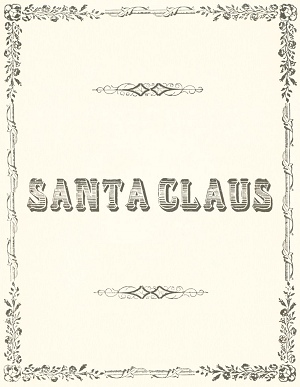
p. 3
A VISIT FROM ST. NICHOLAS
by Clement C. Moore, LL.D.
With Original Cuts,
DESIGNED AND ENGRAVED by [Theodore C.] Boyd,
New York:
Henery Onderdonck,
10 John-street.
Henery Onderdonck,
10 John-street.
[1848].
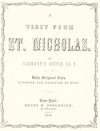
Click to enlarge
Title Page

Click to enlarge
Verso
Entered according to Act of Congress, in the year 1847, by Wm. H. Onderdonk, in the Clerk's Office of the District Court for the Southern District of New. York.
p. 5p. 6
p. 7
p. 8
p. 9
| When out on the lawn there arose such a clatter, I sprang from the bed to see what was the matter. Away to the window I flew like a flash, Tore open the shutters and threw up the sash. The moon on the breast of the new-fallen snow, Gave the lustre of mid-day to objects below, When, what to my wondering eyes should appear, But a miniature sleigh, and eight tiny rein-deer, With a little old driver, so lively and quick, I knew in a moment it must be St. Nick. More rapid than eagles his coursers they came, And he whistled, and shouted, and called them by name; |
p. 11
| "Now, Dasher! now, Dancer! now, Prancer and Vixen! On, Comet! on, Cupid! on, Donder and Blitzen! To the top of the porch! to the top of the wall! Now dash away! dash away! dash away all!" As dry leaves that before the wild hurricane fly, When they meet with an obstacle, mount to the sky; So up to the house-top the coursers they flew, With the sleigh full of Toys, and St. Nicholas too. And then in a twinkling, I heard on the roof, The prancing and pawing of each little hoof— |
p. 13
| As I drew in my head, and was turning around, Down the chimney St. Nicholas came with a bound He was dressed all in fur, from his head to his foot, And his clothes were all tarnished with ashes and soot; A bundle of Toys he had flung on his back, And he looked like a pedlar just opening his pack. His eyes—how they twinkled! his dimples, how merry! His cheeks were like roses, his nose like a cherry! His droll little mouth was drawn up like a bow, And the beard of his chin was as white as the snow; |
p. 15
| The stump of a pipe he held tight in his teeth, And the smoke it encircled his head like a wreath; He had a broad face and a little round belly, That shook when he laughed, like a bowlful of jelly. He was chubby and plump, a right jolly old elf, And I laughed when I saw him, in spite of myself, A wink of his eye and a twist of his head, Soon gave me to know I had nothing to dread; He spoke not a word, but went straight to his work, And fill’d all the stockings; then turned with a jerk, |
| And laying his finger aside of his nose, And giving a nod, up the chimney he rose; He sprang to his sleigh, to his team gave a whistle, And away they all flew like the down of a thistle. But I heard him exclaim, ere he drove out of sight, |
Its title, as most of us know, was later turned into "Twas the Night Before Christmas".
No one really knows how the reindeer ended up attached to a flying sleigh. You would think snow geese might have worked better...no? He's drawn, above, as an old bearded uncle in Georgian-style breeches, buckled shoes, smoking a pipe, and carrying a sack over his shoulder - readying himself to climb down the chimney to fill children's stockings. Rather than the big guy in red that we know, St. Nick was a “little old driver” in a “miniature sleigh” decked all in fur from head to foot. Well, he has a fur hat anyway.
But, whomever actually wrote this poem, it appears that their vision of him might have come from the 1809 Knickerbocker’s History of New York, where Washington Irving described St. Nick flying over the treetops, bringing presents, smoking a pipe, and ‘laying his finger beside his nose'! Plagiarism and mystery galore...
Thomas Nast - transformer...
At least we know for certain that Santa finally became today’s large, red-suited hero, thanks in big part to one Thomas Nast's imagination. He was the 19th century cartoonist for Harper’s Weekly. In 1881, Nast drew a very round and jolly character in a fur-trimmed coat with a stocking cap. He had done a couple of earlier drawings of Santa - as early as 1863, but this is the one that fit the bill! Even Coca Cola used this image and tweaked it into a "brand" Santa for advertising their product. So I can't give credit to the CC company for their Santa which is often portrayed as THE "Classic" Santa. Clearly that Santa already existed, in my opinion.
There is a cynical side to all this love and gifts. The sugar snow melts a little when looked at closely. It is rather sad in some ways, that this "kindly and generous" Santa swept the world in the early twnetieth C. and was soon perverted into a commercial give-away creature who lives hidden away all year making toys for girls and boys .... and wives and husbands and nieces and nephews.
Not that I would want the second version with his horrible Krampus dressed in devil red, but let's face it, Santa is out of control.
Yes, the Ho, Ho, Ho, Santa has become TOO generous. He gives far too many gifts - and now the simple nature of a candy cane, a fresh orange, socks and other necessities, and one lovely little toy has been gone for a long time now. Forever, actually.
It is now about wild shopping by millions and millions of people, out-beating each other's gifts and has turned into a cynical and exhausting event in many many ways.
Each of us can try to have a more simple sharing of holiday spirit without going into a year of debt. But will that ever happen? It is like a child's Christmas train running out off the tracks and no one has the energy or will to stop it.
Santa Claus, Thomas Nast, Harper’s Weekly 1881
Coloured version of Thomas Nast's Santa Claus
Here's a few red coated and rather sweet Santa's that followed using Nast's vision as part of theirs....
Frank A. Nankivell in Puck, v. 52, no. 1344 (December 3 1902)
Norman Rockwell, 1920 and 1922
A Victorian Christmas card and on one my favourite Santa faces
It is hard not to love him, isn't it?
So... be good!
So... be good!









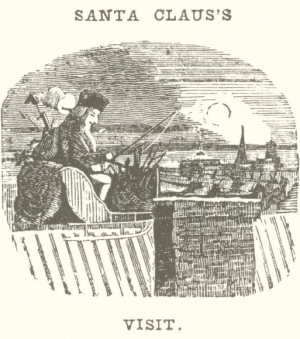
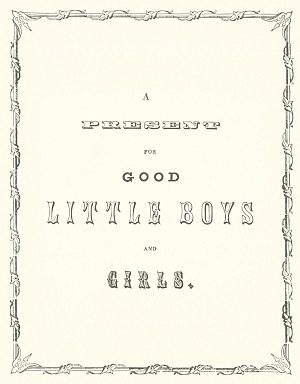
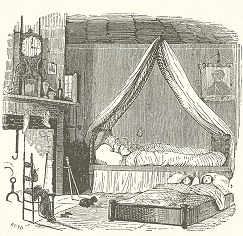


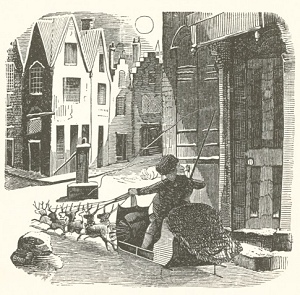
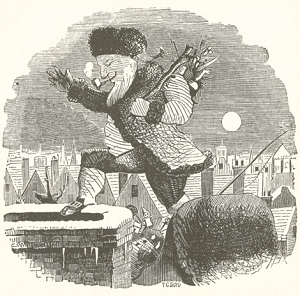
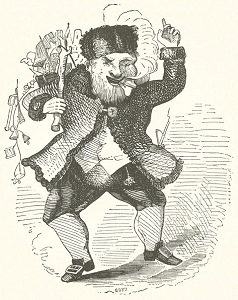
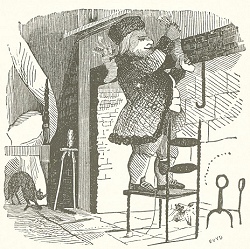
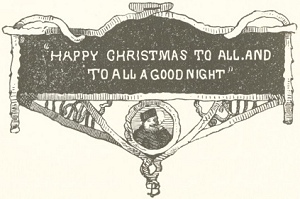












No comments:
Post a Comment
Feel free to leave a comment anytime. Remember you don't need a Google profile. Just make your comment and post as anonymous and let me know who you are, if you wish, in the comment itself - OR use the Name/URL option and leave out the URL if you don't have one!